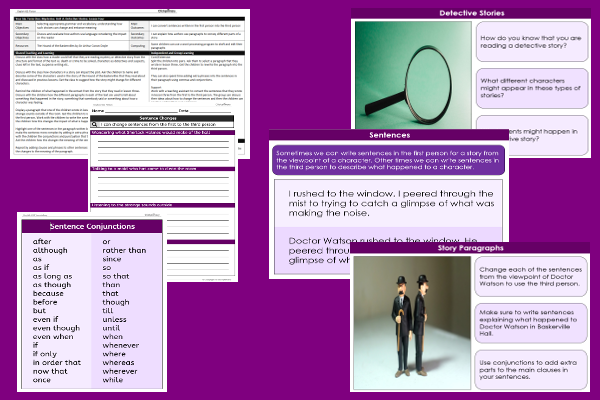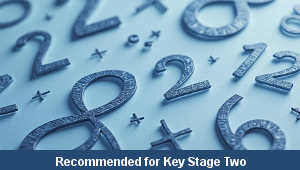Lesson Four – Story Paragraphs

This English teaching pack for Key Stage Two gets the children to model and record how to convert a selection of paragraphs from a detective story from the first to the third person to indicate the sequence of narrative events.
The class can identify and record how to use different types of conjunctions to add extra parts to their sentences matching the style and structure of a detective story.
Download this teaching pack including a lesson plan, classroom activities and an interactive presentation to model and record how to convert a selection of paragraphs from a detective story from the first to the third person to indicate the sequence of narrative events
Activities in this teaching pack include a template to write a selection of paragraphs for a detective story changing sentences from the first to the third person and a vocabulary word bank to select and use conjunctions to link sentence clauses to about what happened in a detective story written as one of the characters.
The interactive presentation gets the children to explore how to convert a selection of paragraphs from a detective story from the first to the third person.
This lesson is part of an English scheme of work to get the children to investigate common narrative features and styles of mystery and thriller writing, learn spelling rules for adding the suffix able and practise using commas to write compound and complex sentences. There are teaching activities for shared learning, differentiated worksheets to support independent learning and interactive presentations to introduce concepts and key skills.
-

Length Calculations
Practise using number calculations skills for addition, subtraction, division and multiplication when solving problems related to length measurements
-

Maths Calculations Assessment
Assess abilities in solving a range of different number problems for addition and subtraction when working with informal and formal written calculations
-

Determinant Lists
Explain and model how to make lists of objects used and found in different locations to match the correct determinants of a and an
-

English SPAG Assessment
Assess abilities in composing sentences for fiction and non-fiction using the correct spellings, punctuation marks and grammar vocabulary phrases
